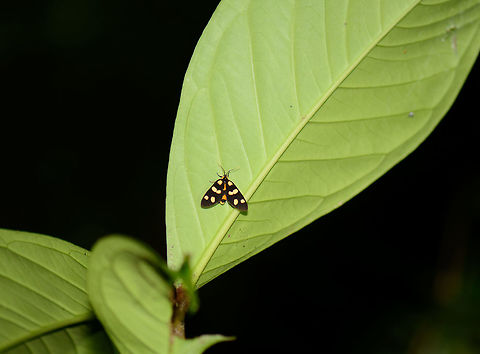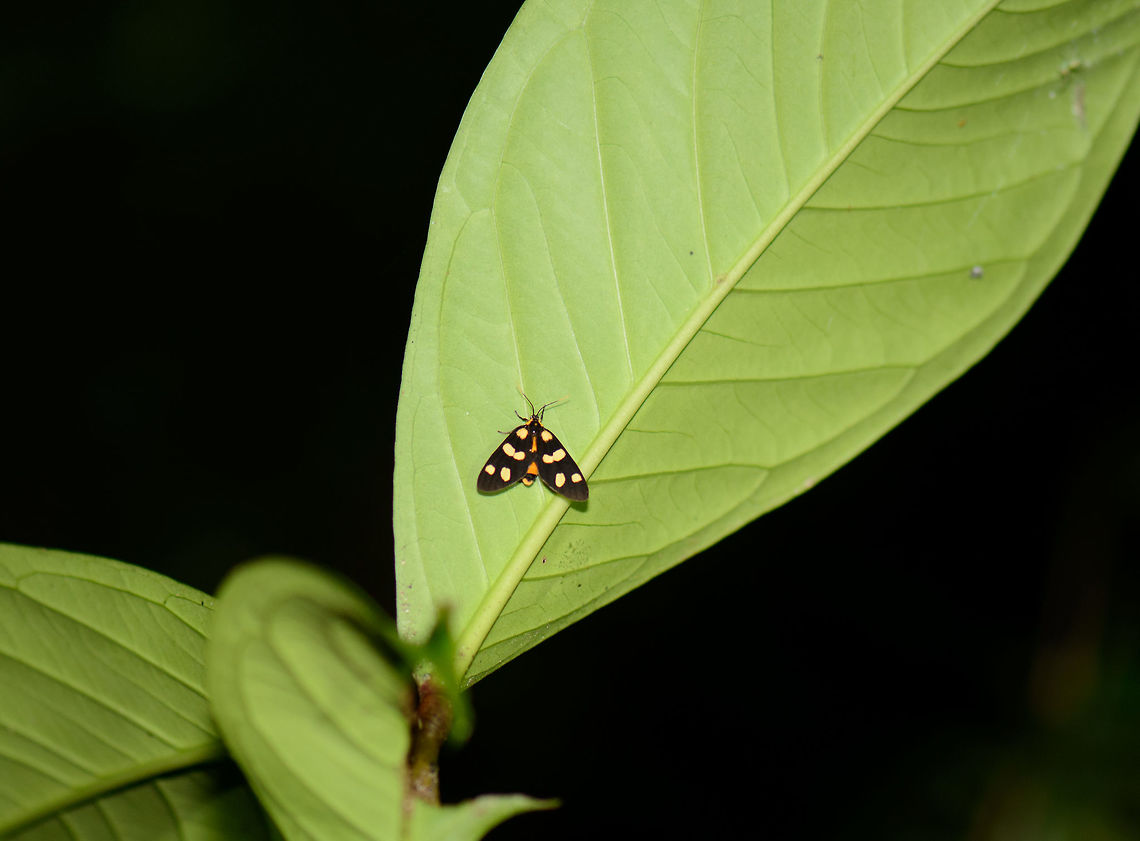
''Dubianaclia butleri'' is a moth of the Arctiidae family. It was described by Mabille in 1884. It is found in Madagascar.
Similar species: Moths And Butterflies
By Ferdy Christant
All rights reserved
Uploaded Dec 3, 2015. Captured Oct 1, 2015 18:42 in 5, Madagascar.


comments (16)
http://www.brisbaneinsects.com/brisbane_tigermoths/OrangeSpotted2.htm
and I think you are right, definitely pretty and interesting enough to ID it :)
or what do you think of these
https://en.wikipedia.org/wiki/Asura_%28moth%29 Posted 10 years ago, modified 10 years ago
https://en.wikipedia.org/wiki/List_of_moths_of_Madagascar Posted 10 years ago
https://en.wikipedia.org/wiki/List_of_moths_of_Madagascar Posted 10 years ago
Subsequent species are not online, exception made on my upper link, or this one http://www.afromoths.net/species/show/27539,
and here on a personal site https://www.flickr.com/photos/grandma-shirley/3186100520.
Most probably the systematic collection is on the museum arquives and not yet ready to be shared online. By the way, they were Arctiidae, but now are Family Erebidae (Arctiini - Erebid moths), sub-family Arctiinae.
This is why lepidoptera are so fascinating... they contain more than 200.000 species described, being almost 90% of them Heterocera moths. And if we think in micro-lepidoptera, well, it never ends. But records such has the one you take are very important. A few months ago talking to a friend that was in tropics, he told me that if you set a light trap in those areas it will be most certain that a few dozen specimens will be subject for study, a few more new to science. The fascination for identification, in my case too, is a way to go a little bit further on their understanding. And so on, and so on... Cheers* Posted 10 years ago, modified 10 years ago
Definitely true, I saw a few of those traps used by scientists in the forests of Madagascar. I also once saw a documentary of scientists using a white sheet in Papua New Guinea, which attracted hundreds of spectacular moth species, many new. Posted 10 years ago
Cream-spot Tiger
Epicallia villica
Scientific classification;
Kingdom: Animalia
Phylum: Arthropoda
Class: Insecta
Order: Lepidoptera
Family: Arctiidae
Genus: Epicallia
Species: E. villica
Binomial name: Epicallia villica
Posted 10 years ago
http://www.afromoths.net/species/show/27403
although this one is similar too - Dubianaclia butleri
http://www.afromoths.net/species/show/27398 Posted 9 years ago